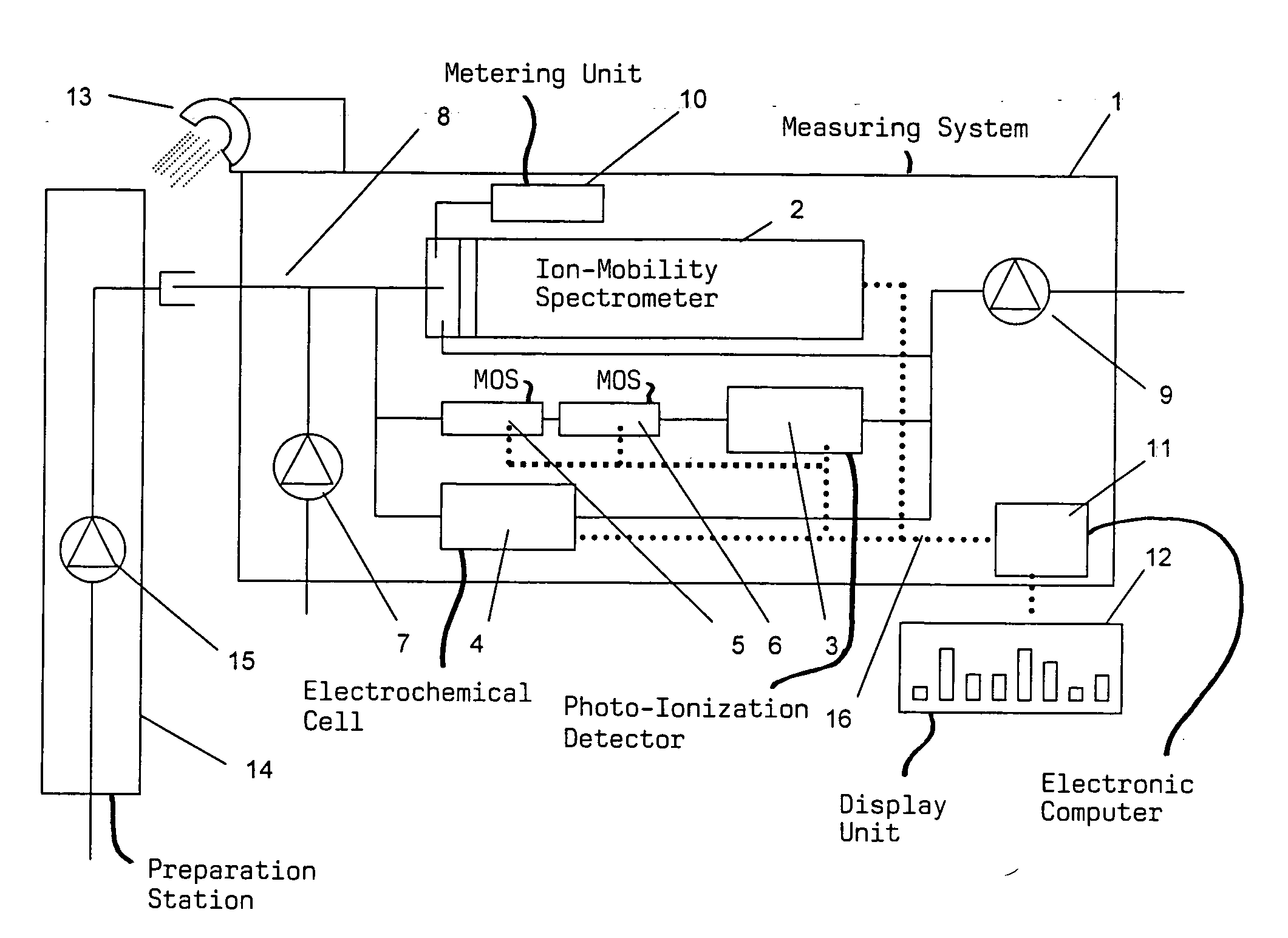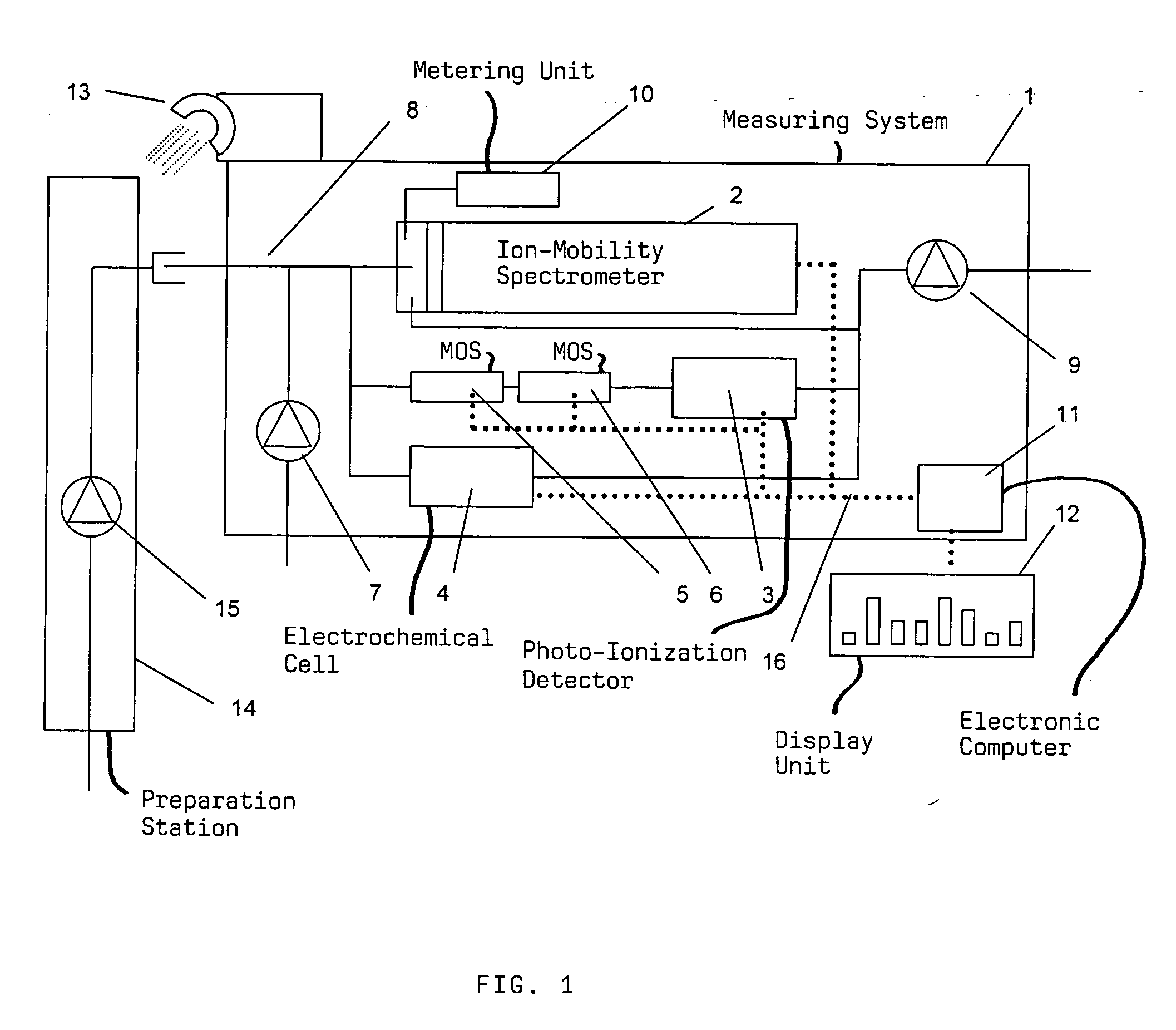Method and arrangement for detecting harmful substances
a detection method and harmful substance technology, applied in the field of detection methods and arrangements for harmful substances, can solve the problems of insufficient selectivity in order to detect harmful substances with the necessary reliability, many harmful substances cannot be detected, and the detection of war materials is too sensitive for detection, so as to improve the measuring operational readiness of the measuring system, prevent excessive exposure of ims, and improve the effect of measuring rang
- Summary
- Abstract
- Description
- Claims
- Application Information
AI Technical Summary
Benefits of technology
Problems solved by technology
Method used
Image
Examples
Embodiment Construction
[0028] The arrangement of the invention primarily comprises a measuring system 1 which includes, for example, a combination of an IMS 2, a PID 3, an EC 4 and two MOS (5, 6). The gas to be measured is drawn by suction via a pump 9 and reaches the IMS and the other detectors via a split of the measurement gas path. The path to the other detectors is, in turn, subdivided into two paths. One path leads to the EC 4 and the other path leads via the MOS (5, 6) to the PID 3. The gas paths are thereafter brought together before they are connected to the pump 9.
[0029] The measuring system includes a further pump 7 for admixing a reference gas into the measurement gas path 8. The reference gas is drawn by suction by the above-mentioned pump 9. In order to go easy on the detectors, the measuring system is so operated that primarily the reference gas is measured. For low measuring signals, the flow rate of the pump 7 is reduced so that the portion of the ambient air to be measured increases. Th...
PUM
| Property | Measurement | Unit |
|---|---|---|
| concentration | aaaaa | aaaaa |
| heights | aaaaa | aaaaa |
| electron affinity | aaaaa | aaaaa |
Abstract
Description
Claims
Application Information
 Login to View More
Login to View More - R&D
- Intellectual Property
- Life Sciences
- Materials
- Tech Scout
- Unparalleled Data Quality
- Higher Quality Content
- 60% Fewer Hallucinations
Browse by: Latest US Patents, China's latest patents, Technical Efficacy Thesaurus, Application Domain, Technology Topic, Popular Technical Reports.
© 2025 PatSnap. All rights reserved.Legal|Privacy policy|Modern Slavery Act Transparency Statement|Sitemap|About US| Contact US: help@patsnap.com


